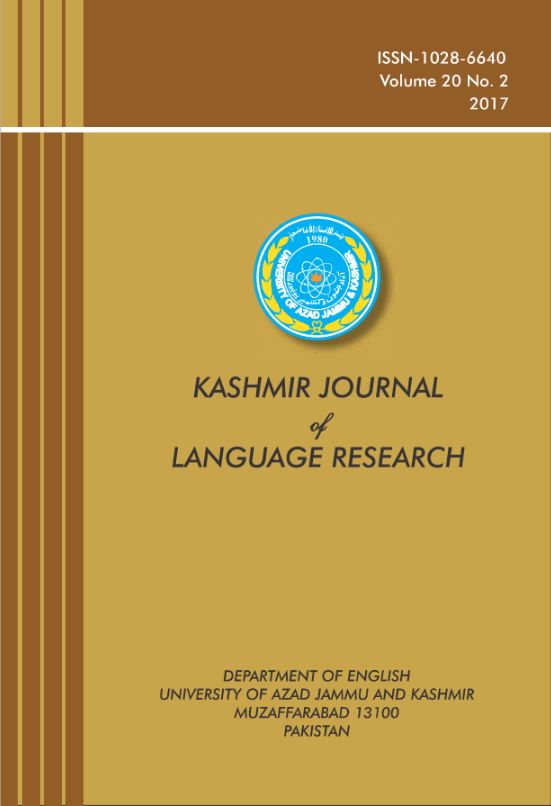Cognitive Accessibility and Referents Encoding Possibilities
Abstract
This paper investigates the different encoding possibilities of referents in line with the cognitive accessibility level in the mind of the interlocutors in Pashto language. The paper discusses different encoding possibilities cross linguistically and eventually figures out what possibilities are found in Pashto. The paper focuses the speaker’s choices between different types of referring expressions such as full determiner phrases, pronouns, clitics, or agreement markers/accessibility markers according to the salience in a given discourse context (Ariel, 1990) in the light of Accessibility Theory. Accessibility Theory classifies referents into higher and lower accessibility markers in line with the cognitive accessibility level in the mind of the interlocutors, for example the following examples show lower and higher accessibility makers in Pashto respectively. In the first example (1a), the proper noun (Ahmad) shows the lower accessibility marker while in the second example (1b), the pro (an empty argument) shows higher accessibility maker.
1.
a. Ahmad kitab rawro
Ahmad book bring.PST.PF
Ahmad bought the book.
b. ......... raa ye wro
Pro 3.SG.CL bring.PST.PF
He brought it.
A close relationship between the salience/accessibility and the morphological encoding of a discourse referent in Pashto is established. The study finds out that the higher accessibility markers are chosen if the accessibility of the discourse referents is higher while lower accessibility markers are chosen if the accessibility is lower. The lower accessibility markers are more informative than the higher accessibility markers, i.e. proper names or full DPs are more informative than (weak) pronouns, clitics, agreement markers and pro. The less informative markers are often phonologically reduced or deficient. The use of these markers is driven by the speaker’s desire (in line with discourse context) to use appropriate (full or reduced) markers to refer to highly accessible or low accessible discourse referents.

Downloads
Published
Issue
Section
License
Copyright (c) 2022 Kashmir Journal of Language Research

This work is licensed under a Creative Commons Attribution 4.0 International License.




